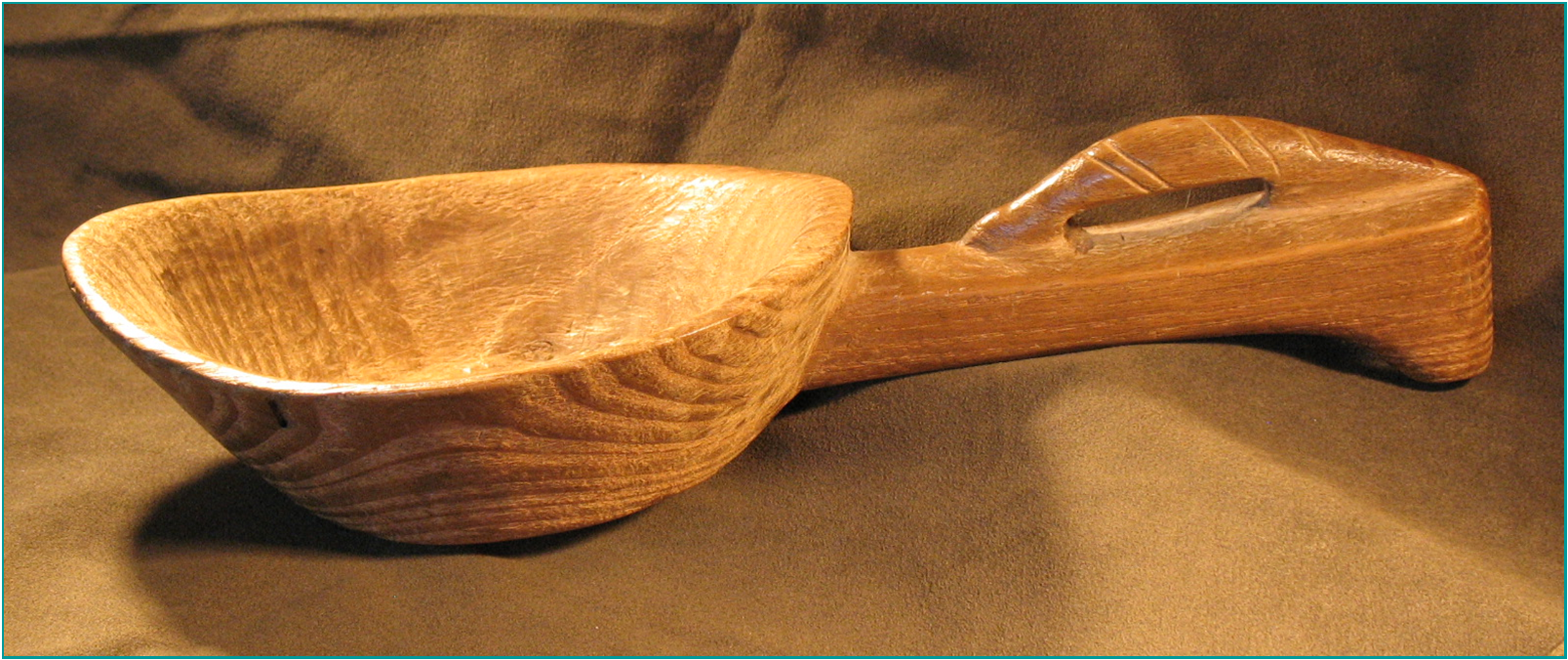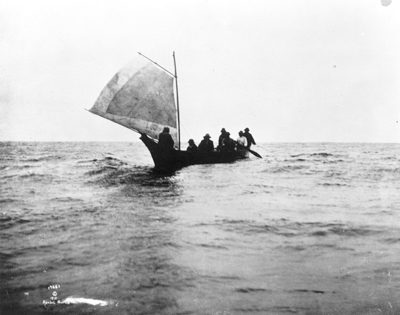
Canoe under sail: Photo by Asahel Curtis, used by permission from Washington State Historical Society, #1943-42-19251.
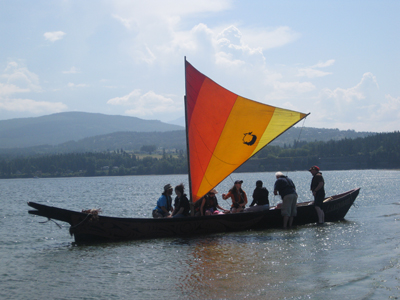
The Laxaynem with its sail unfurled.
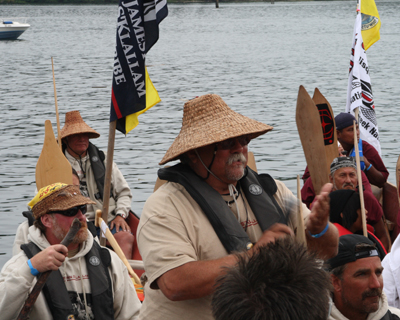
Jamestown S’Klallam puller Pete Holden asks permission to come ashore at Cowichan, British Columbia in 2008.
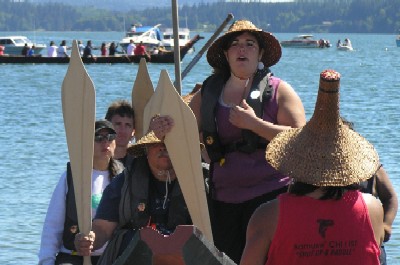
Tribal citizen Khia Grinnell asks for permission to come ashore on the 2007 Paddle to Lummi.
|
Canoes were, and still are powered by multiple pullers paddling in unison, with a skipper in the stern using a larger paddle as a rudder to steer. Crews practice together to establish a rhythm and share the workload.
When the wind is right, sails are often used. There were sails made of woven cattail, rush, cedar bark, as well as the cedar boards. With contact the canvas sails were a highly prized trade item. Not having a keel or rudder, the canoe could not quarter or sail into the wind, but a stiff following breeze propelled canoes with welcome speed.
All canoes had bailers. They may be made out of western red cedar bark, a handle across the top with the bark attacked at each end of the handle. A bailer might also be carved in the shape of a sheep horn spoon or the top of a bent wood box.
This wooden ladle could have been used for multiple purposes, including bailing water from canoes.
The Jamestown S’Klallam Tribe makes its paddles out of yellow cedar, though others use maple or yew wood.
When Coast Salish Tribes traveled to the territories of other Tribes, they had to ask permission to come ashore. This was done with the pullers holding the paddle end of their paddles facing upward (meaning “we come in peace”), while one member of the canoe crew explained who they were and asked for permission to come ashore. The same protocol is carried out today during the annual
Tribal Canoe Journey.
The ceremony (now called protocol), for telling the identity of the arriving tribe, was done with songs, dances, traditional greetings and asking for permission to come into another’s tribal territory before landing.
|




